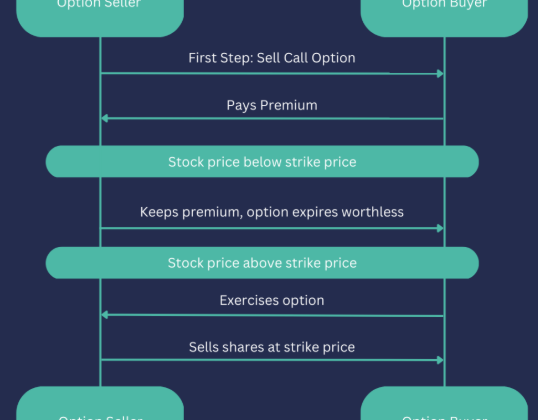
The startup landscape is brimming with potential as we approach 2025. Technologies like generative AI and decentralized finance (DeFi) are poised to reshape industries and offer innovative solutions to modern challenges. As new trends take shape, startups have an exciting year ahead, with numerous opportunities to leverage cutting-edge technology, sustainability, and new business models.
Key Trends to Watch in 2025
- Generative AI’s Impact: Revolutionizing content creation, marketing, and operational efficiency, generative AI will be a game-changer across industries.
- Decentralized Finance (DeFi): Offering alternative financial systems, DeFi is set to disrupt traditional banking models, especially in underserved markets.
- Sustainability Takes Center Stage: As the climate crisis intensifies, startups focused on green technologies and circular economies will thrive, attracting conscious consumers and investors.
- Vertical SaaS Growth: Customized software solutions for specific industries will replace one-size-fits-all options, providing targeted tools and expertise.
- UK as a Global Tech Hub: London’s tech scene continues to grow, attracting international talent and fostering collaborations that drive innovation on a global scale.
Predictions from Startup Founders for 2025
Startup founders are gearing up for a year of innovation, with AI at the heart of this transformation. Many founders foresee AI not just automating tasks but fundamentally changing business models and meeting increasingly complex consumer demands. There’s also a growing shift towards more sustainable, ethical practices, with consumers becoming more conscious of the environmental and social impacts of the brands they support. This opens the door for startups that prioritize ethical values to flourish.
1. Generative AI: Transforming Creative and Operational Processes
Generative AI is no longer just a buzzword—it’s becoming essential for startups. By streamlining content creation and automating tasks, generative AI helps businesses scale efficiently. This technology is already making waves in marketing, from generating website copy to creating personalized email campaigns, allowing startups to save time and focus on strategic growth. Additionally, generative AI helps businesses adapt to market changes by analyzing data, predicting trends, and optimizing pricing models.
2. Decentralized Finance (DeFi) Takes Over the Financial Sector
Decentralized finance (DeFi) is transforming traditional finance by offering blockchain-based solutions. By reducing intermediaries and providing transparent systems, DeFi is revolutionizing transactions, especially in underserved markets. Startups that embrace DeFi technology can simplify their financial operations and improve liquidity, driving the growth of a more decentralized financial ecosystem.
3. Innovations in Logistics and Manufacturing
The challenges of global supply chains over the past few years have pushed startups to find innovative ways to make logistics and manufacturing more efficient. AI-powered platforms are optimizing delivery routes, cutting costs, and improving tracking. Robotics and automation are also enhancing manufacturing, allowing startups to scale production while maintaining quality and reducing manual labor.
4. Hyper-Personalization with Data Analytics and AI
Today’s consumers expect personalized experiences, and AI is the tool that makes it possible. Startups are utilizing data analytics and machine learning to deliver hyper-personalized content, product recommendations, and marketing messages. By analyzing customer data, businesses can craft individualized experiences that boost customer satisfaction, increase sales, and foster loyalty.
5. Sustainable Solutions in Consumer Goods
The growing focus on climate change is pushing demand for sustainable solutions, especially in consumer goods. Consumers are now more likely to support brands that prioritize sustainability. Startups are answering this demand by developing eco-friendly products, using biodegradable packaging, and ensuring transparency in sourcing. This focus on sustainability presents a huge opportunity for startups to meet the needs of conscious consumers while contributing to a greener future.
6. Vertical SaaS Solutions on the Rise
As businesses increasingly seek specialized software, vertical SaaS (Software as a Service) is gaining traction. Unlike generic software solutions, vertical SaaS is tailored to meet the specific needs of individual industries. By offering targeted features and deep industry knowledge, vertical SaaS startups are gaining a competitive edge, providing better customer support and faster deployment.
7. Web3: Digital Identity and Gaming Revolution
Web3 technologies are expanding beyond cryptocurrency into areas like digital identity and gaming. Startups are creating decentralized platforms where individuals control their personal data, empowering users and enhancing privacy. In gaming, Web3 is enabling players to truly own their in-game assets, creating new economic opportunities and increasing player engagement.
8. Evolving Workforce Dynamics: Hybrid Work and Talent Marketplaces
The workplace is evolving, and startups are developing tools to support the rise of hybrid work models. These tools facilitate seamless collaboration and communication across remote teams. Additionally, talent marketplaces are growing, connecting businesses with a global pool of skilled professionals. These platforms are reshaping the way companies hire, offering flexibility and access to a diverse talent pool.
9. On-demand Startups in Healthcare and Retail
The demand for instant services is pushing the rise of on-demand startups, especially in healthcare and retail. In healthcare, startups are providing virtual consultations and on-demand medical appointments, increasing accessibility and reducing wait times. In retail, on-demand startups are offering fast delivery services and personalized shopping experiences, leveraging AI to streamline fulfillment and enhance customer satisfaction.
10. The Rise of Ethical Startups
Consumers are increasingly prioritizing ethical practices, and startups that focus on sustainability, fair trade, and transparency are well-positioned for success. Ethical startups are leading the way by ensuring fair labor practices, transparent sourcing, and social impact. As consumers become more conscious of the brands they support, these startups are gaining trust and loyalty, creating a positive impact on society.
The UK’s Role in Shaping Global Startup Trends
The UK remains a key player in the global startup ecosystem, with London continuing to be a major tech hub. The city’s diverse and innovative ecosystem fosters collaboration and attracts global talent. UK startups are at the forefront of cutting-edge technologies like AI and blockchain, and they’re contributing to the country’s reputation as a leader in tech. Government support and a strong investment climate are helping UK startups grow and expand internationally.
Looking Ahead: The Future of UK Startups
As 2025 approaches, UK startups have a lot to look forward to. The ongoing support from investors, government programs, and the thriving London tech scene will drive the growth of innovative startups. Challenges such as navigating regulations and adapting to new market dynamics will require agility and creativity. However, the opportunities for success are immense, and with the right mindset, UK startups will continue to lead the way in technological innovation.
















